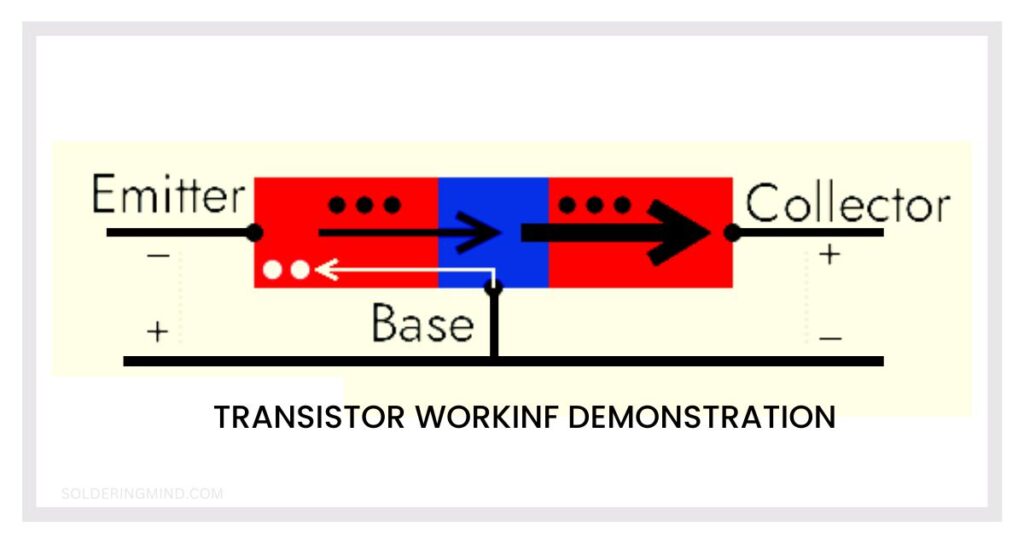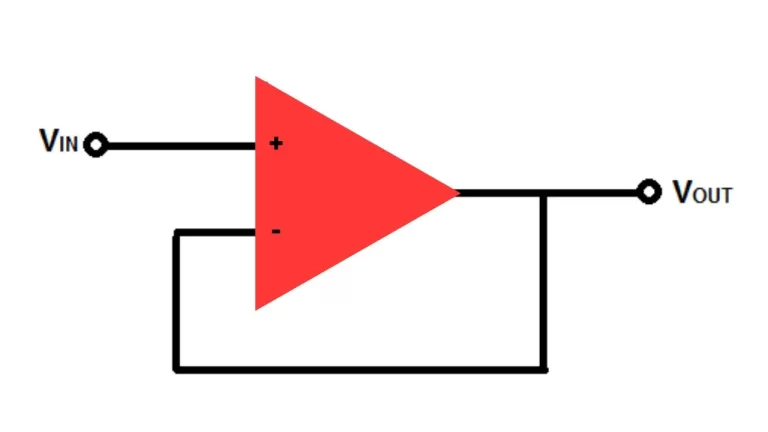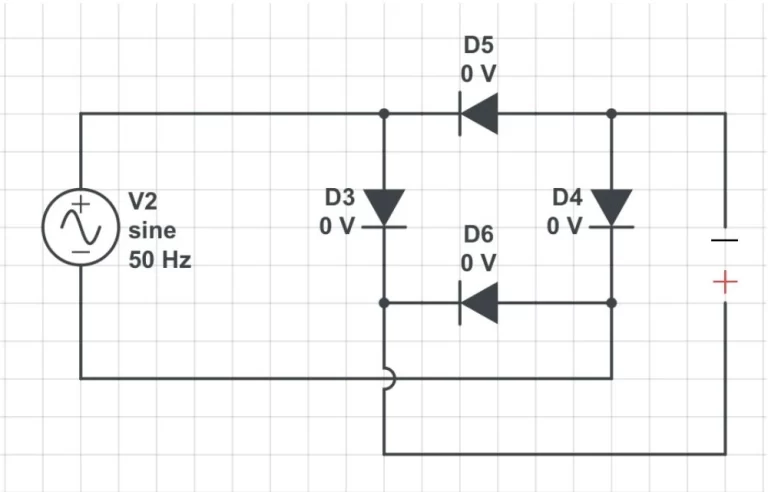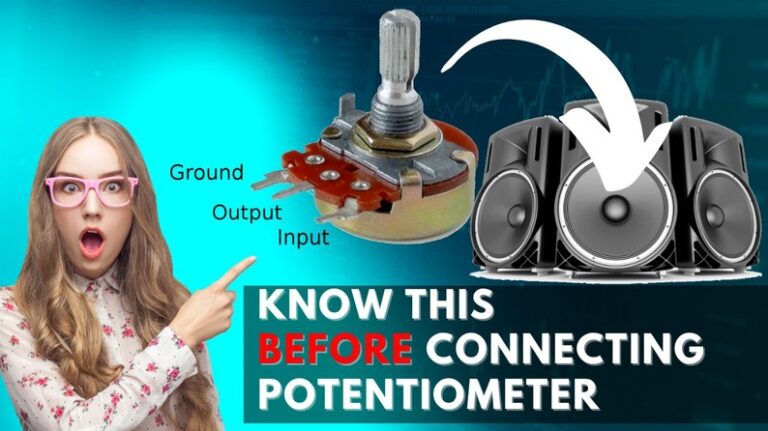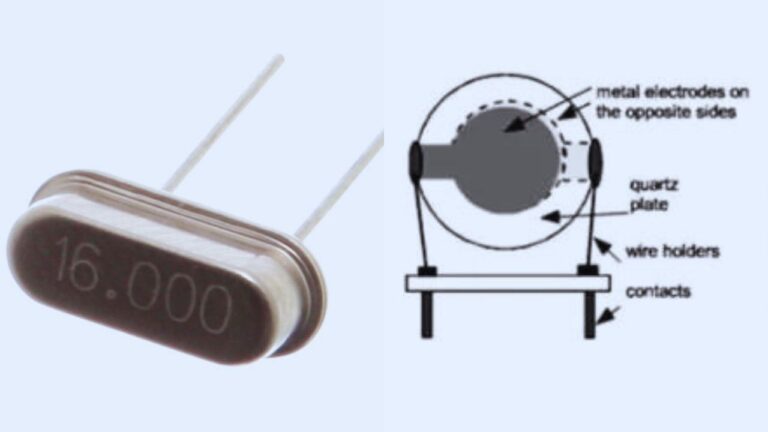Definition: The transistor is an electronic semiconductor device that can amplify the signals from low resistance circuit to high resistance circuit, Control current, and Switching purposes. Typically the transistor contains three layers or three terminals. Each of the sections can transfer the electrical energy to a different state.
The transistor is available in two types PNP and NPN. The two PN diodes are connected back to back. The terminals of the transistor are named Emitter, Collector, and Base. The emitter base junction of the transistor connects to the forward bias and the collector base junctions to the reverse bias.
While the transistor works as an amplifier it can able to transform the low-quality signals to high-amplitude signals. When working as a switching the transistor will turn on/off function.
Transistor Symbol
Transistors are of two types, namely NPN transistors and the other one is PNP transistors. Both transistors are designed with two blocks of either P-Type semiconductor or N-Type semiconductor. The two blocks of P-type joined with the N-type semiconductor are known as PNP transistors. Similarly, If the two N-type blocks are joined with a P-type semiconductor is known as an NPN transistor. The Symbol of the PNP and NPN transistor is shown below.
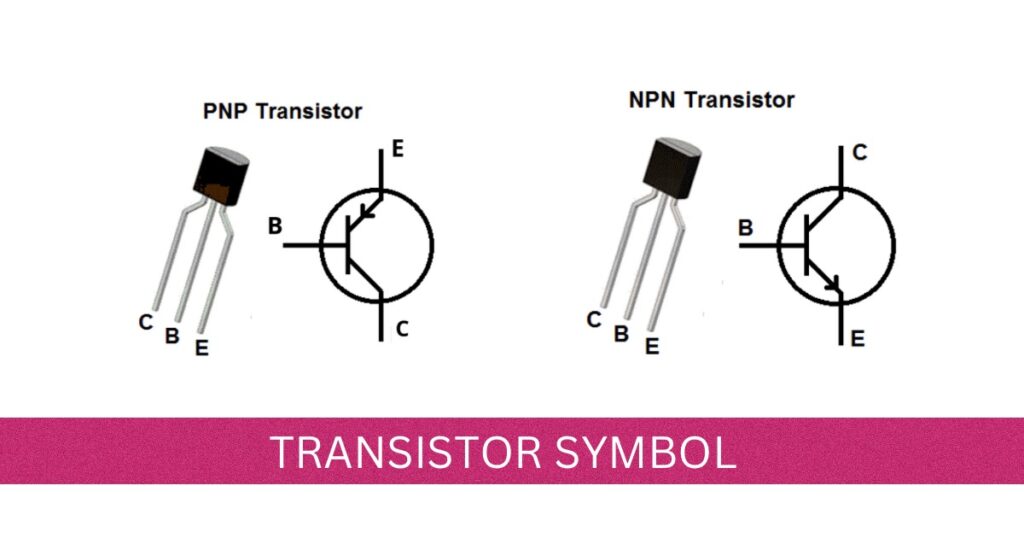
The arrow indicating in the transistor figure is denoted as the direction of flow of conventional current in the emitter to base in the forward direction. The main difference between the NPN and PNP transistors is the direction of the current.
Transistor terminals
The transistor has three terminals named E, B, and C. Expanded as Emitter, Collector, and Base respectively. Each terminal of the diode is explained below.
Emitter: The pin emitter carries the majority of charges. The emitter pin is connected to the forward bias concerning the base pin, so the majority of the charge carries to the base. For more understanding, the emitter emits the electrons to the base area. Which controls the number of electrons the emitter section emits.
Collector: This pin section will collect the majority portion of the charge carrier or the electrons are mostly collected by the collector pin. Then after it goes to the circuit. The collector is like the receiver and the emitter is the electron provider. The collection section is moderately doped. The large size area of the collector can able to collect most of the electrons supplied by the emitter.
Base: The center junction of the transistor is known as the base. The base junction is connected with two other junctions of collector and emitter. The emitter-base biasing determines the internal resistance of the transistor. If the emitter-base is forward biased then it offers a low internal resistance to the transistor. When the collector base junctions are in reverse bias then the circuits offer a high resistance. The base junction is very thin and lightly doped in it.
Working of Transistor
The transistor acts as an amplifier and also a switch, which can able to boost the input signals to high amplitude or it can turn on or off the circuit several times per second. The transistor is the PN junctions placed back to back. To explain the working of both NPN and PNP transistors starting with an example.
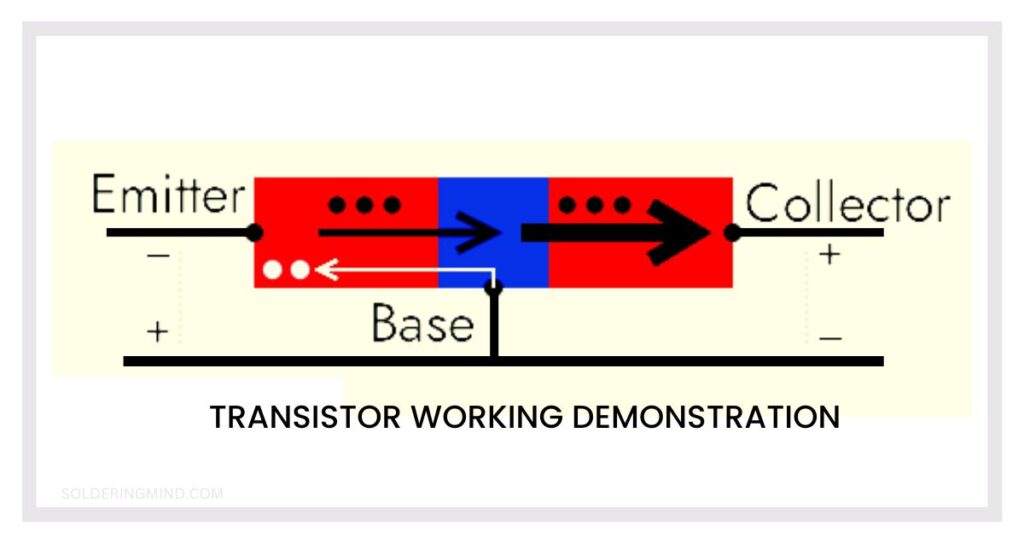
An NPN transistor is taken for testing, and the current flows through the base-emitter junction. The electrons will pass to the base section. The base region is doping very low so there are few holes available for recombination. So most of the electrons pass through the base junction to the collector area, because of the Tatar action of the positive potential of the collector pin.
To Know More About Transistors: Check Here

